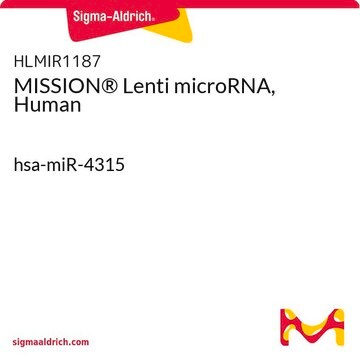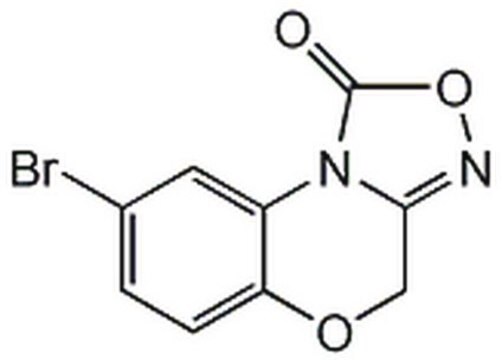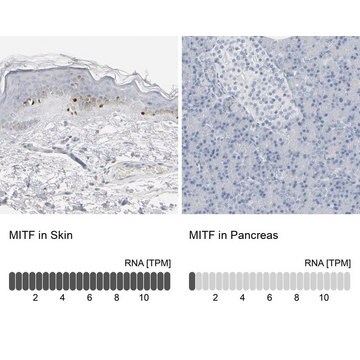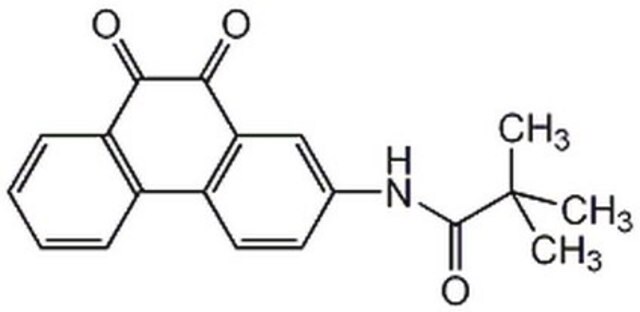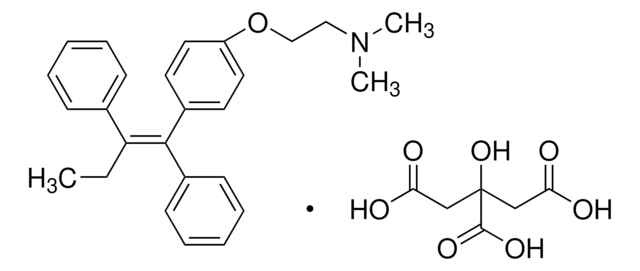SML1666
4-Hydroxytamoxifen
≥98% (HPLC), solution, Tamoxifen metabolite
Synonym(s):
4-OHT, cis/trans-4-Hydroxytamoxifen
About This Item
Recommended Products
Product Name
4-Hydroxytamoxifen Ready Made Solution, 5 mg/mL in ethanol: isopropanol (95:5)
biological source
synthetic
Quality Level
form
solution
concentration
5 mg/mL in ethanol: isopropanol (95:5)
shipped in
dry ice
storage temp.
−20°C
SMILES string
N(CCOc1ccc(cc1)\C(=C(\CC)/c3ccccc3)\c2ccc(cc2)O)(C)C
InChI
1S/C26H29NO2/c1-4-25(20-8-6-5-7-9-20)26(21-10-14-23(28)15-11-21)22-12-16-24(17-13-22)29-19-18-27(2)3/h5-17,28H,4,18-19H2,1-3H3/b26-25-
InChI key
TXUZVZSFRXZGTL-QPLCGJKRSA-N
Biochem/physiol Actions
Preparation Note
Signal Word
Danger
Hazard Statements
Precautionary Statements
Hazard Classifications
Aquatic Chronic 3 - Carc. 1B - Eye Irrit. 2 - Flam. Liq. 2 - Repr. 1B
Storage Class Code
3 - Flammable liquids
WGK
WGK 3
Flash Point(F)
55.4 °F
Flash Point(C)
13 °C
Choose from one of the most recent versions:
Certificates of Analysis (COA)
Don't see the Right Version?
If you require a particular version, you can look up a specific certificate by the Lot or Batch number.
Already Own This Product?
Find documentation for the products that you have recently purchased in the Document Library.
Customers Also Viewed
Our team of scientists has experience in all areas of research including Life Science, Material Science, Chemical Synthesis, Chromatography, Analytical and many others.
Contact Technical Service


